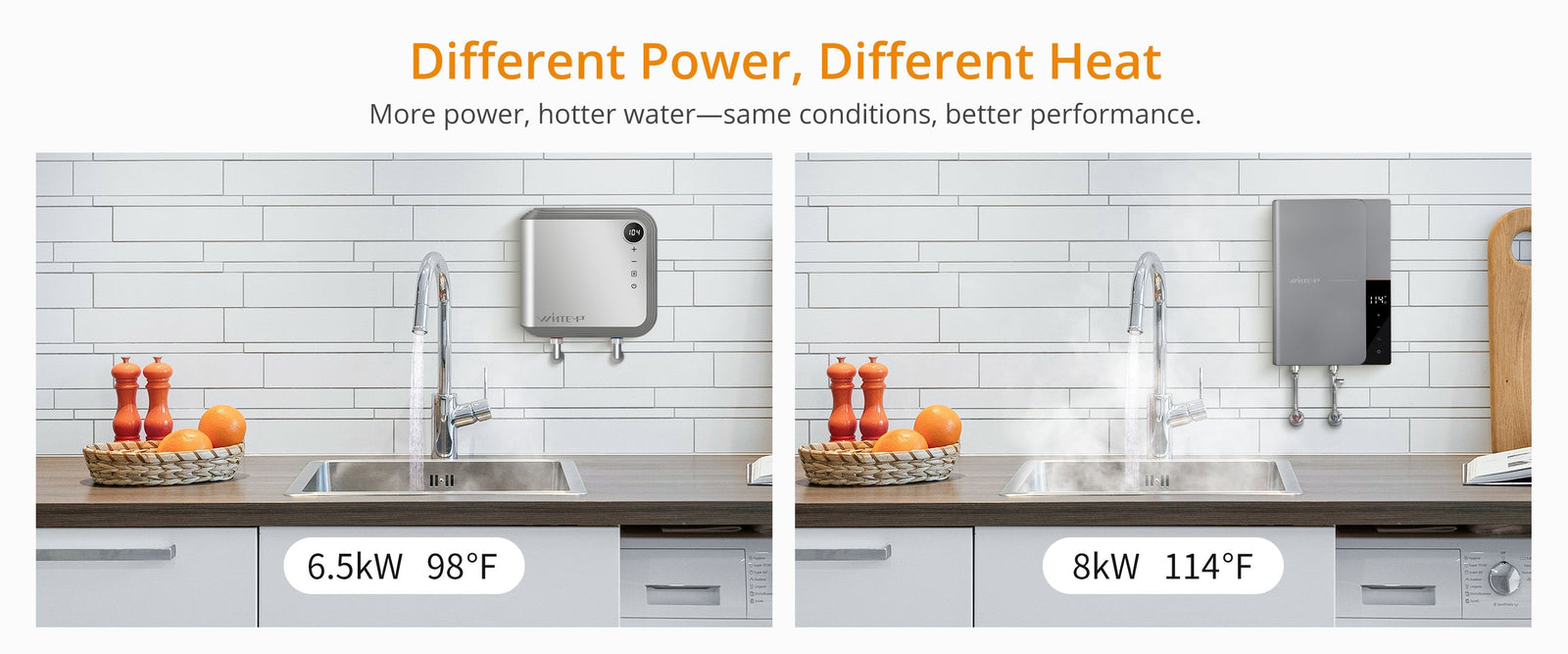Tankless electric water heaters are known for their energy efficiency, compact design, and on-demand heating. Yet, many users—especially first-timers—often report concerns like “not enough hot water” or “the flow seems too weak.” Are these genuine shortcomings, or is it a misunderstanding of how these heaters work?

1. Misconception: "The Water Isn’t Hot Enough"
Reality: Tankless electric water heaters heat water instantly as it flows through the unit, meaning the final water temperature depends on three key variables:
-
Inlet (groundwater) temperature
-
Flow rate (how much water you’re drawing)
-
Heater power (kW)
If you're using a 3.5kW unit in winter with very cold input water, it may raise the temperature by only 30–40°F, which may not feel hot enough. A higher-powered unit (6.5kW or 8kW) may be better suited for colder climates or larger kitchen needs.
2. Misconception: "Flow Rate Is Too Low"
Reality: Users expect tankless systems to behave like traditional tank heaters. However:
-
Tankless units prioritize temperature stability, not maximum flow.
-
They limit the flow rate if the water temperature cannot be safely maintained—this is a safety feature, not a flaw.
-
Many models use built-in flow restrictors to optimize heating time and efficiency.
3. Water Pressure vs. Flow Rate
-
Water pressure is what pushes water through the pipes.
-
Flow rate is how much water comes out of the tap. Even with high pressure, the heating capacity might reduce flow rate to ensure stable hot water—especially with compact or low-wattage units.

4. Other Common Causes
-
Multiple outlets used simultaneously: Many tankless heaters are designed for point-of-use. Sharing one unit across multiple taps can exceed its capacity.
-
Electrical limitations: Insufficient wiring or voltage can limit performance.
-
Limescale build-up: Hard water can coat the heating element, reducing efficiency and output—routine descaling helps.
-
Improper installation: Incorrect pipe diameter, long pipe runs, or low inlet pressure can compromise function.
5. How to Ensure the Best Experience
-
Here’s a simple rule of thumb for households:
|
Use Case |
Recommended Power |
Flow Rate |
|
Hand washing |
3.5–4.4 kW |
0.5–0.8 GPM |
|
Kitchen sink |
6.5–8 kW |
1.0–1.5 GPM |
|
Shower (single) |
11–13.8 kW |
1.5–2.0 GPM |
|
Whole house |
18–36 kW |
2.5+ GPM |
WINTEMP offers a variety of sizes tailored for different applications. For instance, the WINTEMP 6.5kW compact unit is ideal for under-sink installations, while the 27kW model supports whole-house usage with ease.
-
Install as close to the water outlet as possible to reduce heat loss.
-
Clean filters regularly to maintain good flow.
-
Adjust temperature seasonally—lower in summer, slightly higher in winter.
-
Check water pressure: Ensure your system meets the heater's minimum pressure requirements (usually around 0.03 MPa or 4.3 psi).

Summary
Many of the perceived issues with tankless electric water heaters arise from misunderstanding, incorrect usage, or selecting the wrong model for the scenario. With proper sizing, installation, and maintenance, they provide a highly efficient and reliable source of hot water—especially in compact or single-outlet applications like kitchen sinks.

